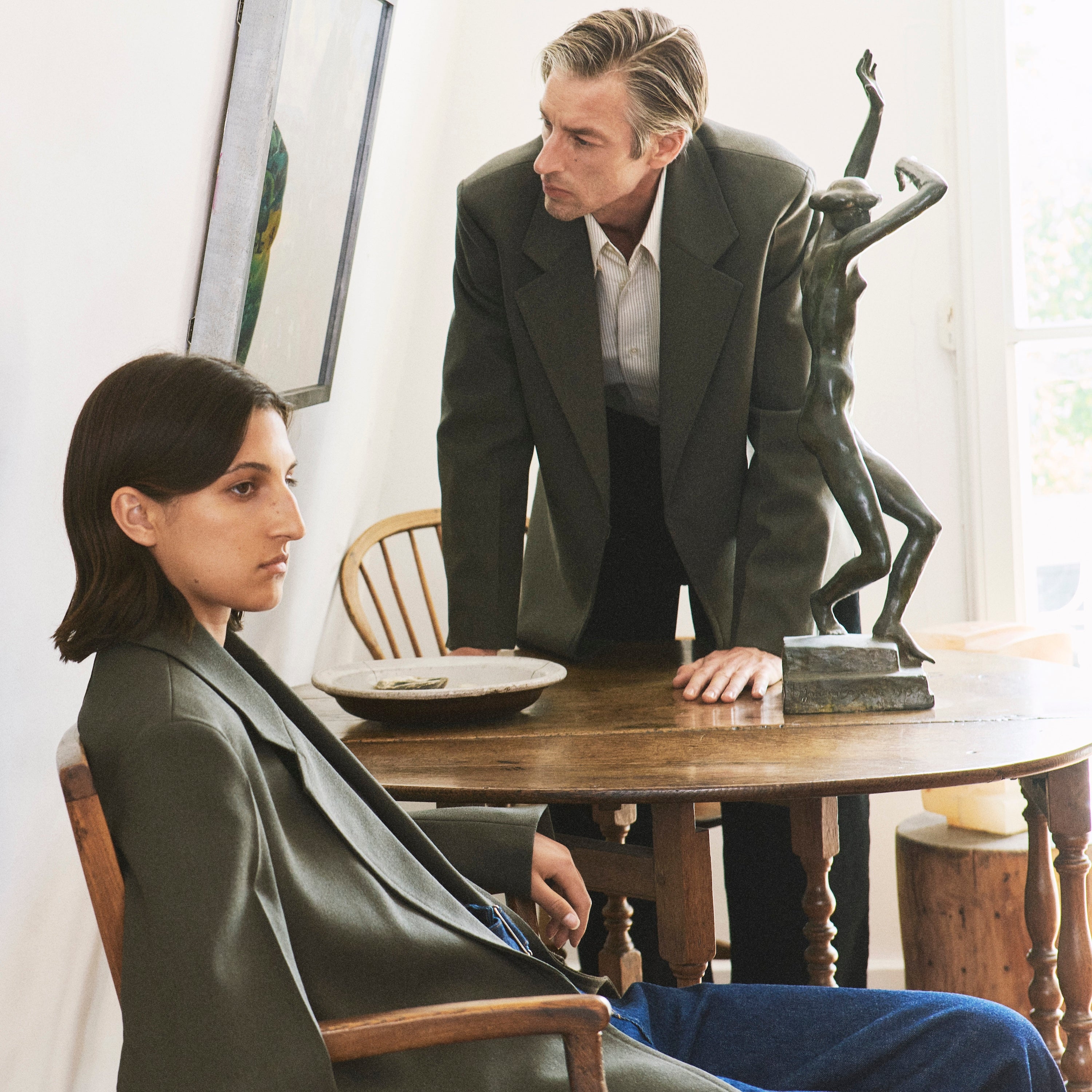


With summer (finally) incoming, the t-shirt becomes the centerpiece of one’s wardrobe for the months ahead. But for what should be the simplest element of your outfit, it’s also perhaps the easiest to get wrong.
T-shirts, at their best, are a prime example of minimalism: clean lines, block colour, no adornment or extraneous detail. When worn correctly, they have a timeless, style-agnostic quality. They crop up through eras and epochs, a unifying thread running through disparate styles: Marlon Brando in a close-fitting ringer shirt for The Wild One; Lou Reed’s black t-shirt paired with black leather for Transformer; the first incarnation of Dexy’s Midnight Runners (as captured in David Corio’s recent book The Soul of The Bullring), with white cap-sleeve t-shirts under leather coats and donkey jackets in a homage to On The Waterfront; the entire late-80s Americana revival. Pretty much every style subculture from rockers to skinheads has integrated them. Nobody ever looks embarrassing in an old photo of themselves in a plain, well-fitting t-shirt. They’re the sartorial equivalent of a bare white wall or Helvetica type. And for those reasons, a good t-shirt should be the building block of a modular outfit.
However, this ubiquity has also led to the t-shirt being undervalued at best, or an afterthought at worst. As a result, too many outfits can be ruined by garments made cheap and fast: thin fabric, a warping and loss of shape, a stretched out neckline and a poorly-fitting body are the classic giveaways of a bad t-shirt. Much modern mass production has exacerbated this, a poor state of affairs for an outfit with a storied history.
The t-shirt is rooted first and foremost in function. Around World War One, the US Navy issued them in plain white as undergarments. However, the hot, grimy realities of marine labour meant that upper layers of uniform were frequently discarded with the underwear duly becoming outerwear. By the 1920s, the term T-shirt had entered the Merriam-Webster dictionary as its mixture of form and function saw it adopted more widely by the civilian population. By the time of Dorothea Lange’s photos of 1940s America, the t-shirt is a common sight on young men in California, while the youth films of the 1950s from A Streetcar Named Desire to Rebel Without A Cause popularised them further as stand-alone garments.


This is a useful reminder of what a radical, unusual piece the t-shirt is, and how much attention should be given to finding the right one. Two key options currently available from Studio Nicholson are the Letra and the Piu. The Letra is a more regular cut and comes in a heavier, mercerised combed cotton, with a set-in sleeve and a neat rib neck. The Piu comes in a midweight compact cotton and is cut with more volume, featuring a dropped shoulder and a wider sleeve which sits lower down the arm (a note on the Piu: it looks oversized on the hanger, but the shape ensures that it isn’t baggy, so go true to your usual size for the correct fit).
Both items are made in Portugal, with a softness, weight and detailed cut that you’d expect from a regular shirt, but is too often neglected when it's ‘just’ a t-shirt. Both these styles retain the minimalism and simplicity of a classic T, but alter the form slightly to give you more versatility and shape and elevate the piece to make it a foundation for the rest of your outfit. It’s a reminder that while the plain t-shirt was created from necessity and function, when made properly they have an intrinsic beauty which means they never go out of style. Invest in these as your new wardrobe staples.

